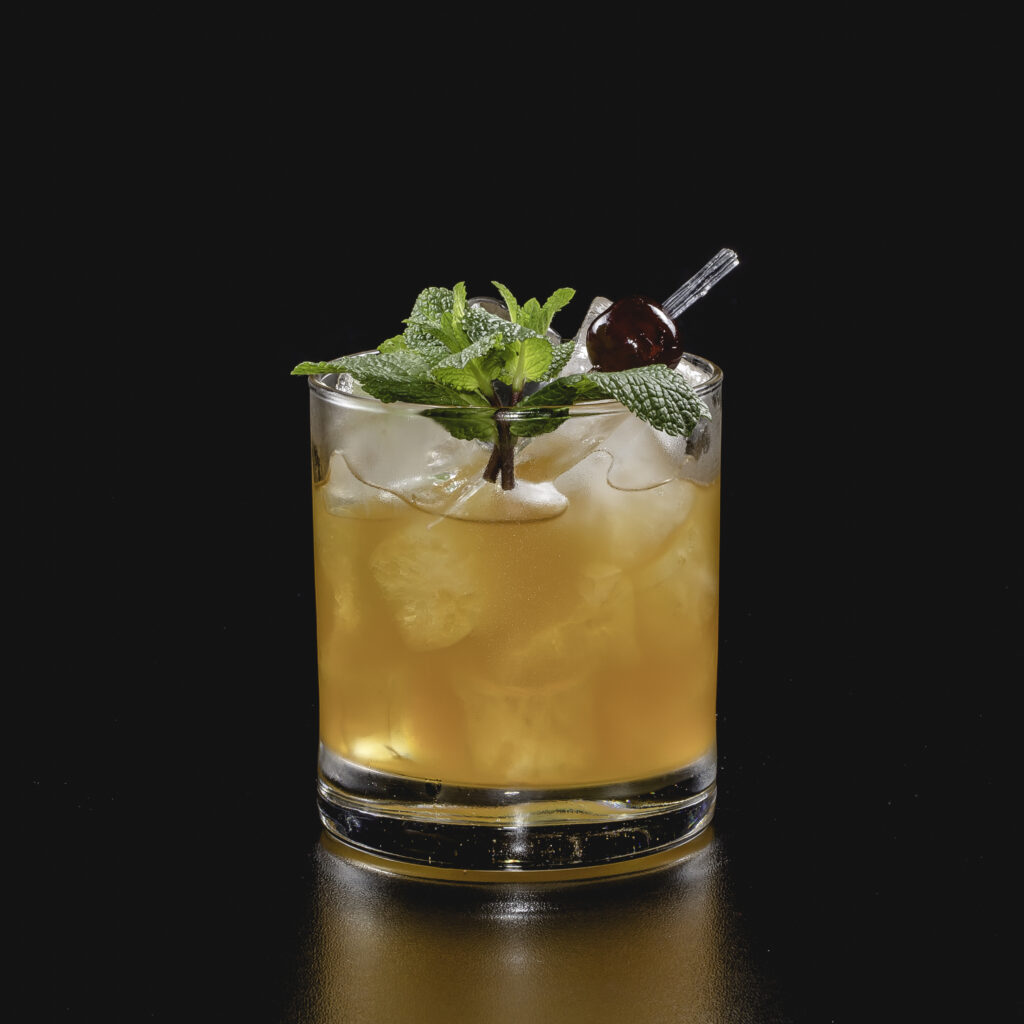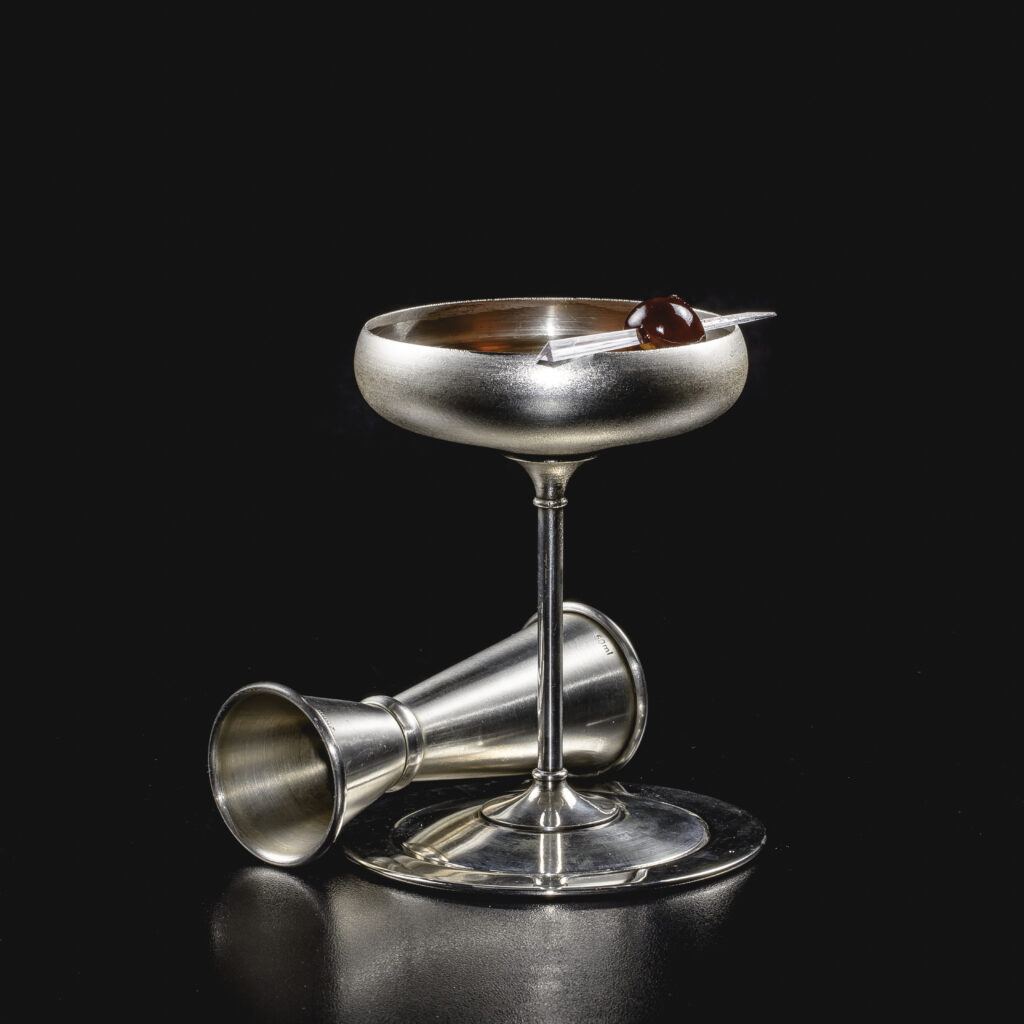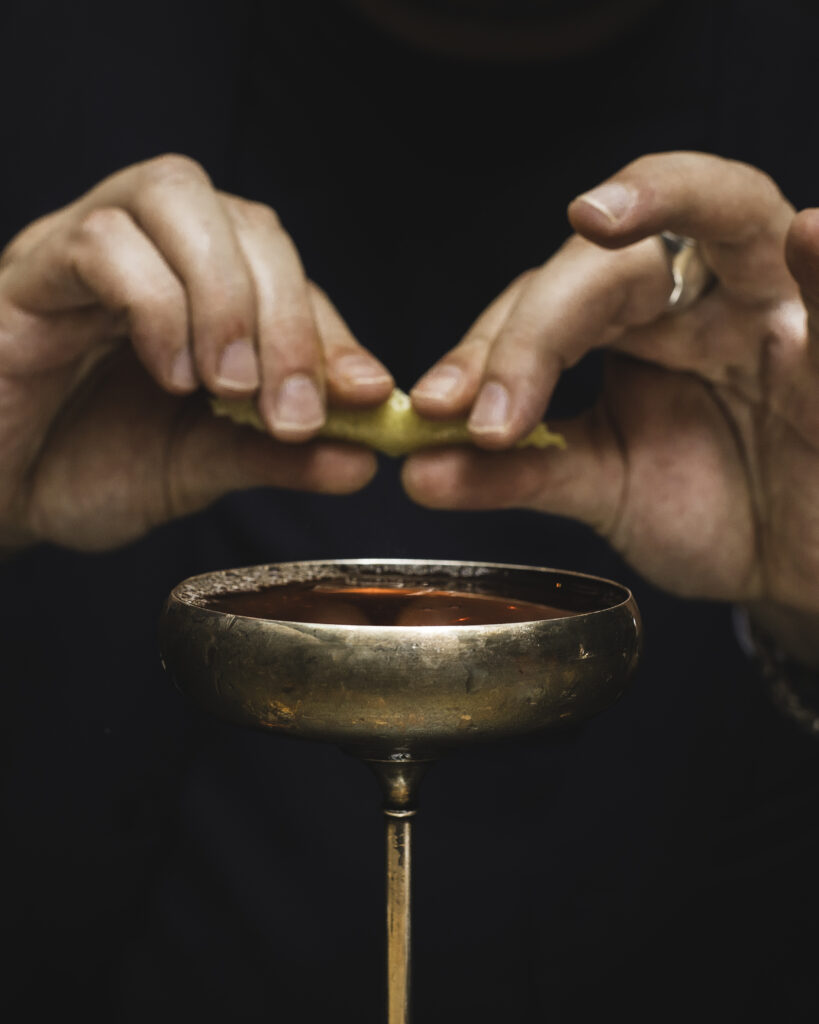[:it]Paolo Sanna: a life dedicated to mixing, inside (his) Banana Republic[:]

[:en]
Roman in accent and soul, Paolo Sanna is the point of reference in the place where he has worked for 25 years now, so much so that there are those who define him as the fourth brother of the titular family. A competitor in competitions in the sector, today she takes care of the judging and organization of several of these, as well as dedicating herself to physical and virtual projects far from Banana Republic.
What are your origins and where did you come from to arrive at Banana Republic?
I was born in Rome in 1976. At the age of 20, as soon as I finished school, I started working at Banana Republic and I never moved from there. I started by being a dish rack and glass washer and then, little by little, I acquired more and more authority in what had in the meantime become my home. I first became director of the dining room and then of the venue. When I started, the managers - the brothers Massimiliano, Alessandro and Valentina Benedetti - had chosen to convert the previous high-level fish restaurant into a restaurant-pub where you could eat traditional Roman dishes until 4 in the morning.
What was the first cocktail you made? When did you realize you wouldn't be the only one?
My first cocktail was a Cuba Libre. It was '98-'99, a time when we already had drinks like Manhattan and Sidecar on the menu. They asked me for a Cuba Libre – the barlady was missing that evening – with lots of rum, little ice, little Coca-Cola and no lemon. Over time, I became more and more passionate about mixing, so much so that, in view of the renovation which took place in 2008/09, we created one of the first tailor-made cocktail bars, with a workstation and bottle rack. At that time there were pubs and wineries that prepared cocktails but few 'pure' cocktail bars.

What has changed in this quarter of a century? What was your relationship with competitions?
Unlike kids today, we weren't lucky enough to be able to get information easily. There was no Internet, but only books and courses to become a barman. You couldn't be inspired by any bartender from the other part of the world through videos but there were already competitions. I did my first Diageo World Class, 9-10 years ago, at the age of 33-34, and it was right there that I realized that this world was growing. I took part in the first Campari Competition, where I came second at national level and first place in Rome, I won the Stolichnaya Sette Collins competition, organized by Velier, based on the blending of Sette Colli, and the Martini Gran Lusso, which brought me in London. I never thought about winning races, but rather about having fun. At the Diageo World Class, for example, I brought a cocktail that I served inside a model made by a friend of mine in the shape of a volcano. I liked showing that something different from the ordinary could be done.
At a certain point did you decide to leave, dedicating yourself to the jury and the organization?
Yes, competitions have given me a lot but I wanted to try my hand at something different. Among the many juries - the Campari Competition and RG Mania's Summer Hit Festival are just two of these - I was called to take part in the Roman Head to Head Bartender competition. Subsequently I collaborated on the commercial part and then I decided to organize it. The creator was the manager of the best beach bar in Italy for 4-5 consecutive years, Singita, Christian Lo Russo and the competition was born with the involvement of 8 bars in the city, and then expanded to a national level. This is an under 30 race, which takes place in 8 stages, inside bars, from February to March. For each stage, eight bartenders compete in mixing surprise products, to win the final which takes place in Rome. Three years ago Sossio del Prete won, two years ago my current first barman Marco Fedele and last year Emanuele Ansuini. It was the first traveling competition of this type and the one in November 2020 was the seventh edition.
Let's go back to Banana Republic for a moment. How did you set up the cocktail menu? Can you give us some examples of Banana classics?
Over the last 12 years, coinciding with the evolution of the venue from a classic American bar to a more sophisticated cocktail bar, we have decided to return to the classics and offer cocktails made with homemade preparations. We have started a great study on the traditional book by Jerry Thomas to propose something that is as faithful as possible to the tradition. Currently, the menu is divided into four different sections: the great classics revisited by us with Italian liqueur ingredients and products, our signatures, the great classics of the Banana Republic - which are the best-selling signatures after three months, or at every change menu – and the limited edition section, created with collections of bottles no longer in production. An example of our classics are the Messina and Nuvole, a twist on classic on the Paloma with mezcal, prickly pear liqueur, organic lemons and the Bim bum bam, a Caribbean drink with two types of rum, passion fruit, orgeat and ginger beer.



How is the place organized and what can you eat with it? Have you activated delivery?
At Banana we have two floors, the one below is a cocktail bar, where there are 20 seats, all at high tables, 6 of which are at the counter. On the upper mezzanine floor there is the restaurant room with 35 seats and approximately 25 in the outdoor area, awaiting expansion. The gastronomic offer is always evolving. For three years now we have decided to offer burgers, homemade with sandwiches made especially for us and homemade Danish Scottona meat, in addition to our grilled dishes, fried dishes and pasta dishes. This year we have been very active with home delivery, which we have activated both for the kitchen and for the 14 cocktails in bottles.



One of the characteristics of your cocktails is the focus on Italian liqueur products. How come? Can you tell us about the format you created “In perfect Italian style”?
We have currently decided to focus on these products both for reasons of easy availability and shelf life, and for a great passion of mine. In the 90s, finding Biancosarti or vermouth except Martini's was almost impossible, which is why about ten years ago I decided to organize a format, In perfect Italian style, every Monday to revalue these products that had fallen into disuse. I invited some of my colleagues, such as Patrick Pistolesi, Daniele Gentili, Francesco Pirineo and Antonio Parlapiano, to challenge them to mix these products in perfect Italian style. The format lasted a total of five years, in which I hosted over 60 Italian and international bartenders of the caliber of Flavio Angiolillo, Samuele Ambrosi and Alex Frezza. All the liquor companies supplied me with the products – liqueurs, ratafie and vermouth – and we mixed them. From an exclusive appointment between colleagues, the format opened to the public and then to the whole of Italy, with the tour that I carried out for 4 years thanks to the support of Pallini - limoncello, licorice, bitter, sambuca, mistrà - in schools, cocktails bars and corporate events.
Are there other projects in which you are involved as a protagonist?
I am a consultant for Relais Monaci delle Terre Nere, a hospitality facility on Etna with more than 30 hectares of land. Five years ago I took care of the opening of an internal cocktail bar for them, Convivium Bar, where the drinks are prepared with self-production made with local fruit and vegetables. I am also the bar manager of ShowRUM, a Roman rum festival for which I am responsible for selecting the participating cocktail bars and acting as an intermediary. The third and final project for which I collaborated and in which I am temporarily active is OnOnExperience, a digital platform that gives you the possibility of organizing remote masterclasses between industry professionals or aimed at customers themselves. The bartender can choose the theme, organize the evening, set the duration and price and have fun teaching.

What is your favorite spirit? And the cocktail?
The spirit I prefer to drink is Single Malt Scotch Whiskey par excellence while, if we mean mixing, gin followed by rum. My favorite drink is the Martini, very dry with a spoonful of olive water, an olive and a lemon zest. It's impossible not to fall in love with it, all the greatest have drunk it - from Hemingway to Churchill, through Sinatra and Eco - and for this reason I decided to dedicate my thesis to it. It is a cocktail that loves people, how they are made and which can be tailor-made. At Banana I had a professor as a client who always wanted it with Dutch gin and raw scampi to dip. When he left us, he sent me a book of cocktails from the 1930s, Millemisture. I was very emotional, it was my Hemingway.[:]
